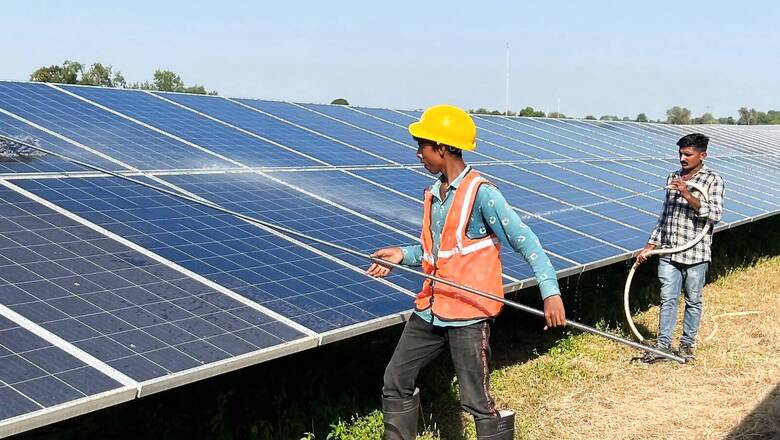
views
Prime Minister Narendra Modi said the world viewed India as a “bright spot” despite the fact that there was a ongoing “global crisis”. The prime minister highlighted India’s growth in the renewable energy sector and listed out its achievements at the ‘Invest Karnataka Summit 2022’, which ended on November 4.
Citing the prime minister’s speech later, an expert said renewable energy, ‘green’ energy, and sustainability were going to be the future. In India, Gujarat, Uttar Pradesh, Maharashtra and Delhi NCR could become a major part of the ‘clean energy’ growth story of India, he said.
“In the sector of renewable energy, the place India has achieved is an example for the entire world,” Prime Minister Modi said during his speech. “In the last eight years, the capacity of India’s renewable energy has increased three times. The capacity of solar energy, in particular, has increased 20 times. Moves made towards ‘green’ growth and sustainable energy have helped attract more investors.”
Talking about several developing sectors, the PM highlighted India’s growth in renewable energy.
“There is a drastic shift towards finding CSO (chief sustainability officer), EVs, eradication of plastic, being carbon neutral and all these factors are in line with what our PM has said about becoming ‘sustainable’,” chartered accountant Prateek Toshniwal, an investor and financial adviser, told News18.
He added: “We see a mammoth growth in the energy and sustainable environment and all our budget allocations and future expansions will be duly following the ‘sustainable story’.”
Toshniwal believes that India’s rank in sustainable development is gradually becoming better. “By 2030, we shall witness a great amount of shift from where we currently are,” the expert said.
‘Solar Growth Story’
Toshniwal highlighted four regions, which according to him, could become a major part of the ‘clean’ energy growth story of India. These include Gujarat, Uttar Pradesh, Maharashtra and Delhi NCR. One of these states was recently been praised for having India’s first fully solar-powered village.
Gujarat’s Modhera became the first such village in the country. United Nations secretary-general António Guterres called this achievement an example of “reconciliation between humankind and planet”.
At a cost of $9.7 million, the solar project has given Modhera’s residents an excess of renewable energy and the state, as well as the central government, shared the cost of the project. Now, solar and rooftop panels cover nearly 30 acres in Modhera, producing more kilowatts of energy each day than the inhabitants of the village use.
According to the Gujrat government, residents can now save anywhere between 60 and 100 per cent energy costs. The solar project is also turning into a source of income because residents can now sell excess power they produce back to the electric grid.
Data shows India is the third largest energy consumer in the world and ranks third in the attractiveness of renewable energy countries index for 2021. India was the third largest market globally and the second largest market in Asia for new solar PV capacity (13 GW of additions in 2021).
In terms of overall installations, it came in at number four (60.4 GW), passing Germany (59.2 GW) for the first time. Additionally, as of June 1, the installed solar energy capacity has increased 19.3 times over the previous eight years, reaching 56.6 GW.
In September, the cabinet also approved the Production Linked Incentive (PLI) Scheme on ‘National Programme on High-efficiency Solar PV Modules’ for achieving manufacturing capacity of GW scale in high-efficiency solar PV modules. The government has approved a grant for the manufacturing project worth Rs 19,500 crore.
Read all the Latest India News here



















Comments
0 comment